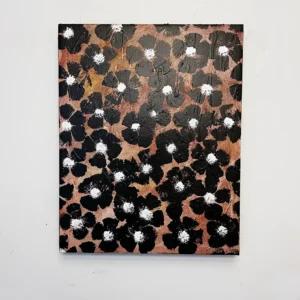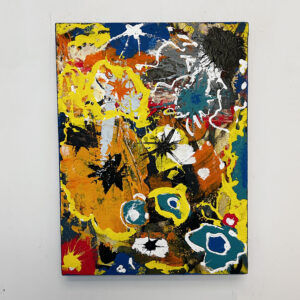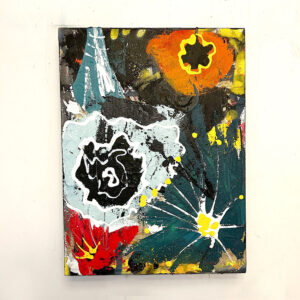Pittsburgh, a city renowned for its rich industrial history and vibrant cultural scene, is also at the forefront of the intersection between art and technology. This dynamic convergence is fostering innovative artistic practices and reshaping the landscape of contemporary art in the city. In this article, we delve into how Pittsburgh’s artists are leveraging technology to create groundbreaking work, the role of institutions in supporting these endeavors, and notable projects that exemplify this exciting trend.
The Confluence of Art and Technology
The intersection of art and technology in Pittsburgh is a natural evolution given the city’s legacy in both fields. Pittsburgh is home to prestigious institutions like Carnegie Mellon University (CMU), known for its cutting-edge research in robotics, computer science, and the arts. This academic environment, combined with the city’s thriving tech sector, provides fertile ground for artists to experiment with new technologies.
Artists in Pittsburgh are utilizing digital tools, software, and new media to push the boundaries of traditional art forms. From virtual reality (VR) and augmented reality (AR) to artificial intelligence (AI) and interactive installations, technology is opening up new possibilities for creative expression.
Institutions Driving Innovation
Several institutions in Pittsburgh play a pivotal role in fostering the intersection of art and technology. CMU’s School of Art and its Integrative Design, Arts, and Technology (IDeATe) network offer programs that encourage students to explore the fusion of art and technology. These programs provide resources, mentorship, and collaborative opportunities that are essential for innovation.
The Andy Warhol Museum, named after Pittsburgh’s most famous artist, also embraces technology in its exhibitions and educational programs. The museum often features contemporary artists who incorporate digital media and technology into their work, thus inspiring local artists to explore new mediums.
The Children’s Museum of Pittsburgh and its associated MuseumLab provide hands-on experiences with technology and art, particularly for younger audiences. These institutions encourage experimentation and play, laying the foundation for the next generation of artists and technologists.
Notable Artists and Projects
Golan Levin: Interactive Art and Computational Design
Golan Levin is a prominent figure in the realm of art and technology. As a professor of Electronic Art at CMU, Levin’s work focuses on developing artifacts and experiences that explore the intersection of code, interaction, and aesthetics. His projects often involve interactive installations that invite viewers to engage with the art in novel ways.
One of Levin’s notable works is “Re:Mark,” an interactive installation that allows participants to draw on a digital canvas using their body movements. This piece exemplifies how technology can transform the viewer’s role from passive observer to active participant.
Sarah Hall: Digital Storytelling
Sarah Hall is an artist who combines traditional printmaking techniques with digital media to create immersive storytelling experiences. Her work often addresses themes of memory, identity, and the passage of time. Hall’s project “Memoryscapes” uses AR to overlay digital narratives onto physical spaces, allowing viewers to explore personal and collective histories through their smartphones.
By merging printmaking with digital technology, Hall bridges the gap between tactile and virtual experiences, offering a rich, multifaceted approach to storytelling.
Pittsburgh Glass Center: Innovations in Glass Art
The Pittsburgh Glass Center (PGC) is a hub for glass artists who incorporate technology into their practice. The center provides state-of-the-art facilities and educational programs that encourage artists to experiment with new techniques and materials. One notable project is the “Glass and Technology” series, which explores how digital fabrication tools, such as 3D printing, can be used in glass art.
Artists at PGC have created works that blend traditional glassblowing with digital design, resulting in pieces that are both innovative and deeply rooted in craft.
Community and Collaboration
The intersection of art and technology in Pittsburgh is also driven by a strong sense of community and collaboration. Local organizations and events, such as the Pittsburgh Technology Council and the annual Three Rivers Arts Festival, provide platforms for artists and technologists to connect, share ideas, and showcase their work.
HackPGH, a community-based makerspace, offers resources and workshops for artists interested in exploring technology. This collaborative environment fosters cross-disciplinary projects that merge art, engineering, and design.
The Future of Art and Technology in Pittsburgh
As technology continues to evolve, so too will the ways in which it intersects with art. Pittsburgh’s vibrant community of artists, supported by robust institutions and a culture of innovation, is well-positioned to lead the way in this dynamic field. Future trends may include the increased use of AI in creative processes, more immersive and interactive installations, and greater integration of digital and physical art forms.
The continued collaboration between artists and technologists will be crucial in driving these innovations. By working together, they can push the boundaries of what is possible, creating new forms of art that captivate and inspire.
Conclusion
The intersection of art and technology in Pittsburgh is a testament to the city’s rich cultural heritage and its forward-thinking approach to creativity. From interactive installations and digital storytelling to innovative glass art and community-driven projects, Pittsburgh’s artists are exploring new frontiers and redefining the possibilities of contemporary art.
As we look to the future, the synergy between art and technology in Pittsburgh will undoubtedly continue to grow, fostering a vibrant and dynamic art scene that reflects the city’s unique blend of history, innovation, and creativity. This confluence of disciplines not only enriches the cultural landscape of Pittsburgh but also sets a powerful example for other cities to follow.


